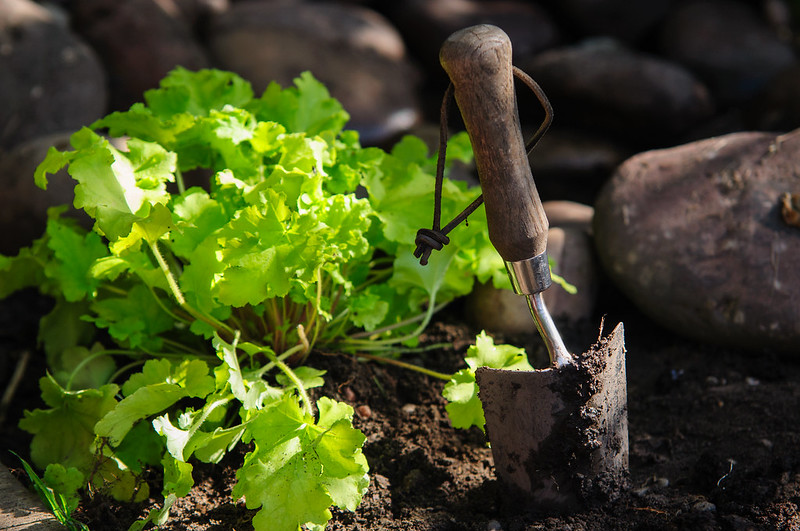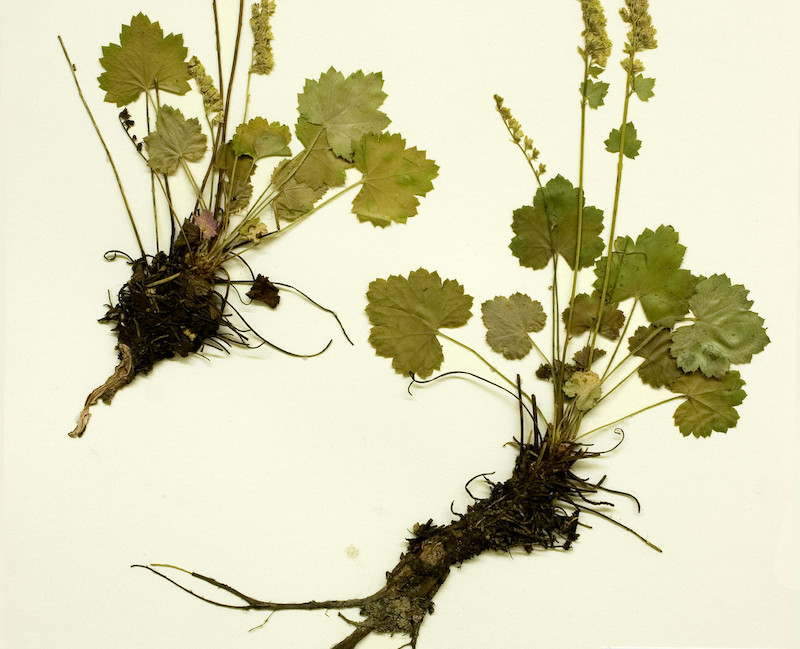If you want to add bold and unique vegetation to your landscape, Coral Bells are the way to do it. These leafy plants, also known as Heucheras, feature various colors, from burgundy to purple, silver to black, and just about anything else you can imagine. Depending on the variety, the foliage can be smooth, wavy, or rippled, adding even more dimension and visual interest. Coral Bells are also adaptable and grow in zones 4 through 9. Propagating Coral Bells is a great way to create a full bed, expand a border, or share the stunning plant with neighbors, friends, and relatives.

Photo by Gail Hurd
Methods To Propagate Coral Bells
Easily propagate Coral Bells through division, cuttings, or seed. Division is the easiest way to propagate Coral Bells and is also beneficial for the plant. Mature plants naturally expand and grow new plants alongside the parent plant. Dividing a large plant into smaller plants reduces overcrowding and can revitalize the mother plant.
Cuttings are an effective method to propagate Coral Bells, but the new plants will take longer to root and establish. Snap off the top of the plant to propagate; the stem should be at least 4 inches long, leaving the bottom portion in place to continue to grow. Remove the bottom leaves and plant the stem in moist soil in a shady spot. Pots are easier to monitor, but the cutting can also be planted directly in a garden bed. Keep the soil consistently moist, and the cutting will grow new roots in a few weeks.
Coral Bells bloom during late spring and summer, and seeds can be harvested in late summer or fall to grow new plants. Plants grown from seed do not always inherit the same traits as the parent plant, and the new plant may have different characteristics.

Photo by CountryMouse13, cropped, Flickr, Copyright CC BY 2.0
What You Need To Propagate Coral Bells
To divide Coral Bells, you will need a pair of sharp pruning shears to separate the plant and a spade to dig holes for the newly divided plants. For cuttings, sharp pruning shears, a container, and soil to propagate Coral Bells are useful but not required. Use shears to remove seed pods from the plant and store them in a plastic bag until they can be planted in the spring. Cold stratification is beneficial for germination, so you can store the seeds in the refrigerator for several weeks.
Best Time To Propagate Coral Bells
Spring is the best time to divide Coral Bells, but early fall can work too. These plants are mounding herbaceous perennials, so wait until new growth appears in the spring and the plant has multiple leaves. Each newly divided plant should have roots and leaves. Dividing plants in the spring ensures the new plants have the entire growing season to acclimate before going dormant for the winter.
Cuttings should be taken in late spring when the plant is actively growing but before it blooms. Collect seeds during the late summer or early fall, but plant the seeds in the spring.
Steps To Propagate Coral Bells
Step 1 - Inspect the plant in the spring to determine if it is big enough to divide. Each section needs several leaves and roots to grow well.
Step 2 - Dig up the plant and gently separate offshoots or manually pull the plant apart into smaller plants.
Step 3 - Replant the main and newly divided plants, allowing space for the plants to grow.

Caring For Coral Bells Divisions
Coral Bells are easy to grow and can handle various conditions, but newly propagated plants are more likely to succeed when they receive the best care possible. New Coral Bells plants prefer partial shade and do best with morning sun and afternoon shade. These plants should be watered regularly to keep the soil evenly moist. Established plants develop drought tolerance, but new plants need continuous moisture to settle in and support root development.
 |
Author Alison Cotsonas - Published 08-14-2023 |
